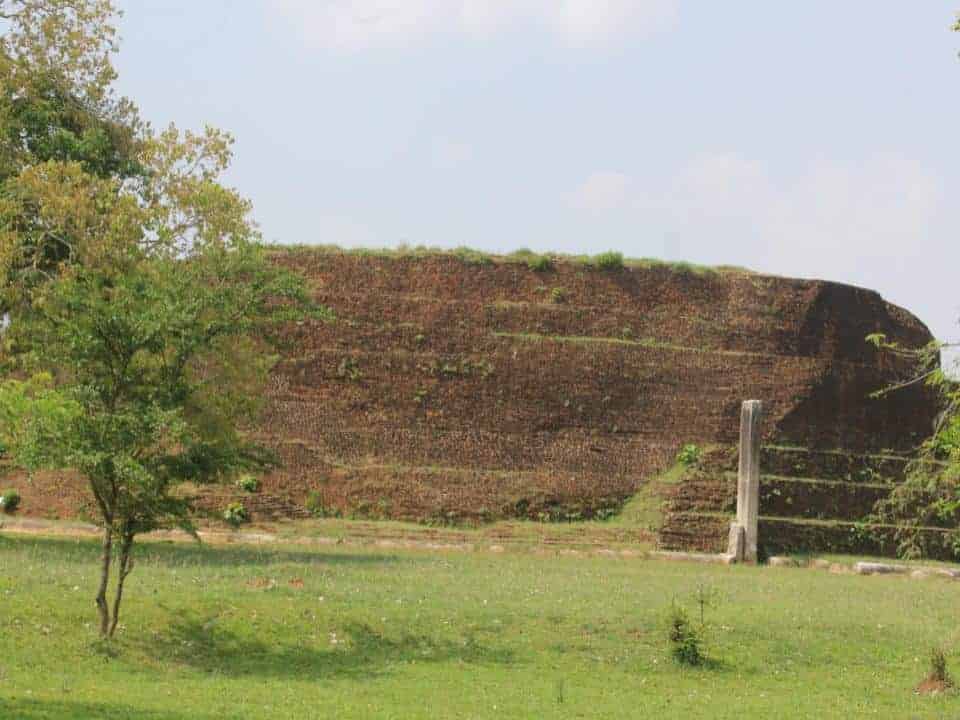Not much remains today of the site known as Dakkhina stupa of Anuradhapura except for a large, long mound stretching for over three hundred feet lengthwise and over thirteen feet thick. The diameter is 578 feet across and the total area once covered at least three and a half acres. Dhakkhina Stupa is thought to be the tomb of King Elara of the Cholas. Elara ruled Anuradhapura for forty-four years, so says the great chronicle. Elara was finally killed by Dutugemunu in single combat after a long and tedious war. It is said that Dutugemunu showed respect to his enemy. Actually building a special tomb for him and issuing a decree that music and celebration be halted when passing by. Thus paying their own respect to his opponent. Archaeologists identified it as Dhakkina Vihara when a Brahmi inscription was discovered with the name “Dakinivihara” on it.
This means southern monastery. Indeed, Dakkhina stupa was not even built by Dutugemunu but by a commander named Uttiya much later. The inscription dates from the time of Valagamba and Uttiya was a general under him. The chronicle itself asserts this fact.
However, the late Prof. Paranavitana added that a charcoal layer dating back to the 3rd Century BC suggests that Dutugemunu himself was cremated here on the grounds of the future chapter house.
During Valagamba’s time, there were many divisions in Buddhism. The Mahayana school began to take hold and even the orthodox Theravadas managed to split up. At Abhayagiri, one of the Mahayana institutes there was a separate sect named Dharmaruchi. The Dharmaruchi went on the spawn the Sagalika sect, which was centered on this monastery.
Yet another split of unorthodox Buddhism occurred when King Mahasen of the 3rd Century AD created the Jetavanarama to support the Vaitulyavada sect, a school of Tibetan Buddhism that he himself followed. It was due to these beliefs that he had anti-orthodox feelings and burned down the original Mahavihara, thus making a villain out of an otherwise powerful and caring ruler. Thus Dakkhina Stupa Vihara was always on the side of the other Mahayana institutes and clashed with the Theravada fraternities. Over the course of time, plenty has been added to, and removed from this stupa, including vahalkadas, altars for placing offerings, and plenty of chapter houses and buildings for the ordination of new monks.
Written by Vasika Udurawane for Travel Lanka Compass



0 Comment